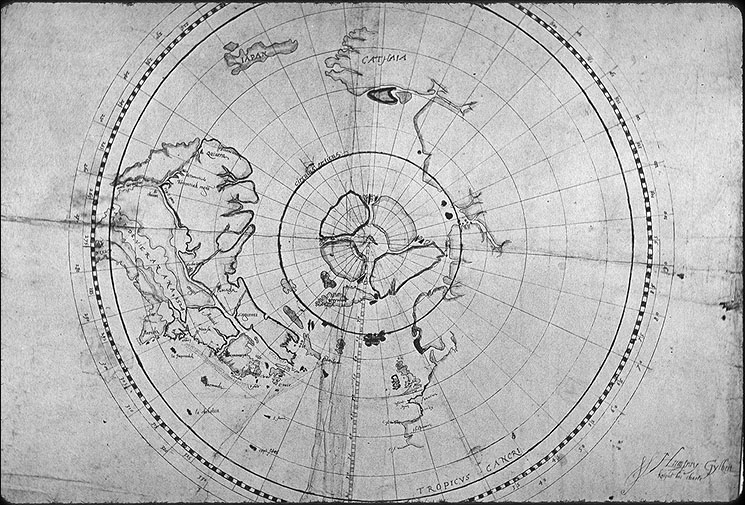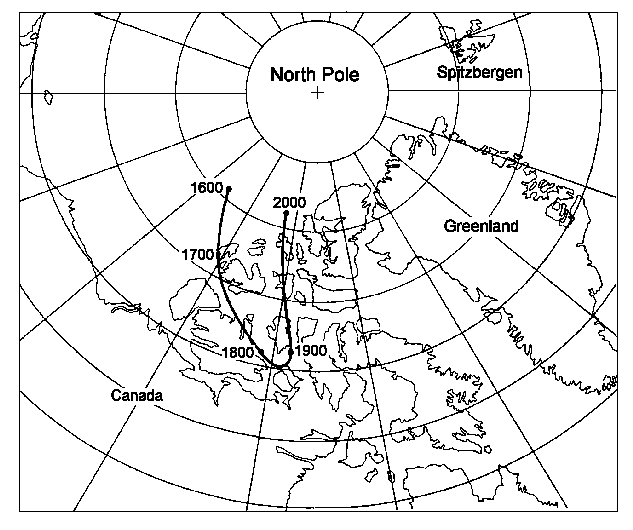This is an old revision of the document!
It is really hard to know what the earth is doing, but we do know that it must be doing something. We can see traces of it everywhere we go, we can taste it in the wine we drink and in the kind of wild plants that grow around us. The places that we know and live in exist within specific, unique and impermanent geophysical niches. Psychogeophysics sets the stage for psychogeography.
The above is a map of the Arctic (1582) by John Dee. In the middle of Arctic lies the hypothesized island Rupes Nigri: a dark, uninhibited mountain made from black magnetic rock to which every compass in the world is pointing.
John Dee was a militant agitator for English colonization who, as her personal advisor, encouraged his queen to re-colonise the ancient Arthurian empire. It fits such a worldview that the end of the compass should be a timeless, unmoveable rock in the centre of the world: to Dee the world was ordered and his job was to identify its contours where ordinary observation failed to reach.
Below is plot that shows the trajectory of the magnetic north pole for the last 400 years. The magnetic north pole moves at a speed of 55-60km per year and a compass points to a different point every time you consult it. The earth does not play a zero-sum game: just because some coordinate is now the magnetic north doesn't mean that all the other coordinates can't be at the end of the arrow at some point.
The earth is exploring all possibilities. This told in the shape of a walk.

